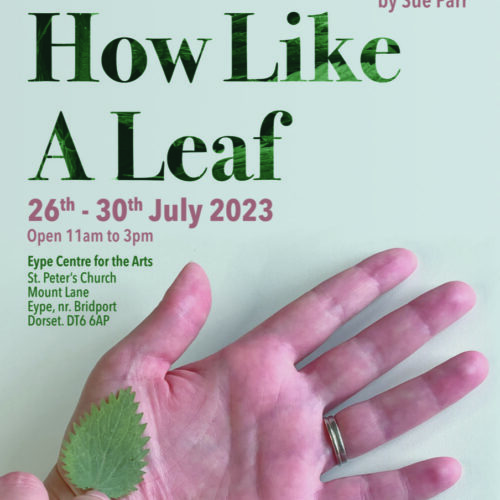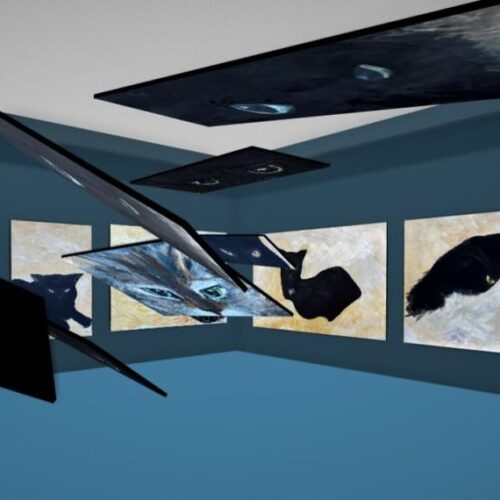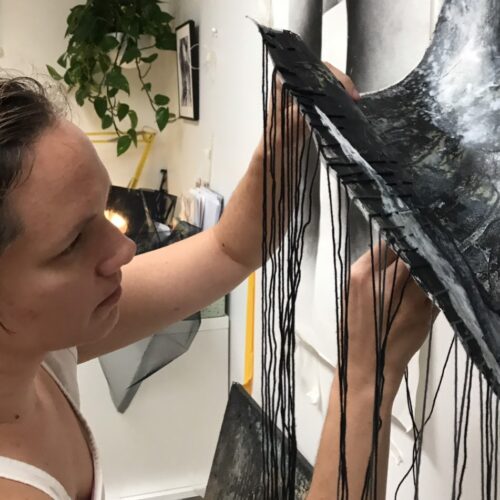
In conversation: Digital assessment
A chat with Arlene Sharp, Emma Drye and Therese Livonne about digital assessment
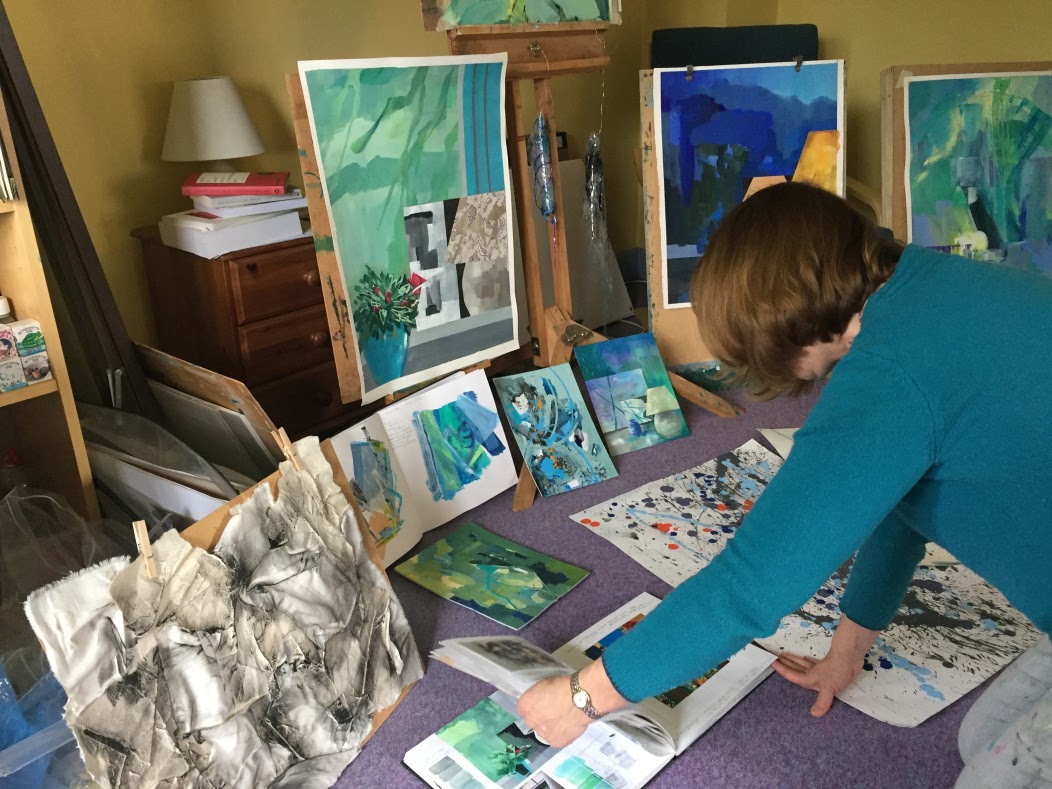
ED: Hello Arlene and Therese! Thanks for coming along (to this bit of digital paper!)
I just wanted us to have a chance to chat about assessment. Shall we start by saying something about what our expectations were?
AS: I was a little concerned about how it would all work out especially as we wouldn’t be able to submit any work physically
TL: I was also very concerned and I thought it would be a lot more complicated.
AS: I agree, in the event it turned out less complicated than I thought it would
ED: I thought it would be really useful to see all the work in one place and have a record, and I thought the instructions were good but I was worried about working with people remotely and how we would achieve parity and the usual conversations we have about students’ work. Did it turn out to be more complicated Therese?
TL: No it turned out it was really me that complicated things… =) It was not at all as complicated as I first thought and the assessment guide was thorough and helpful, but I needed to read it many times…
ED: I ended up working my socks off but managed to keep in touch with all the tutors. You both did something creative with your submission I would say. Did you feel more in control? More at the centre of it – that was the idea anyway?
AS: Yes definitely, especially once I had decided to make a separate wordpress site I felt I had control over what to put in and how to present it all in one place.
TL: I agree, I also felt more in control, I realised there are so many ways you can present your work in, but I haven’t been in that mindset in other assessments because then there has only been one way to do it.
ED: It was really great to see all the different solutions, especially when they suited the work or the person. I hope we keep that element and support students to go for it with video like you did, or with creative presentations like Arlene.
AS: Going back to the assessment guidelines I agree with Therese I had to read and re-read to make sense of everything.
ED: So would that be your advice to newbies – read the guidelines several times? What else?
TL: Yes definitely! And give it a couple of days, write down questions that arise the first time/times you read it, let it sit for a couple of days and then re-read it and you will hopefully see the answer. There is so much information so you need to let it sink in.
AS: Yes also recognise there is more than ‘one way to skin a cat!’ so make it work for you it’s not one size fits all and there are lots of different ways to present the portfolio; do what’s right for you.
ED: One good thing about the digital submissions is that we have an immediate archive which we can hopefully use to give real examples if people let us share them. There were some crackers! Mind you it’s important I suppose that people know it doesn’t have to be flash technically to be effective. We had some lovely heartfelt and personally authentic statements – just a simple word doc but spot on.
AS: Yes exactly – I think that some good examples of low-tech submissions would be extremely helpful.
TL: I agree because that was my own immediate thought – that I needed to produce something high tech professional!
ED: The feedback from students was overwhelmingly positive. I still want physical submissions to some degree for painters when we can – maybe I am old fashioned – but I feel confident that digital submissions can work for us. No system of assessment is perfect though, there are losses and gains in any system.
AS: My biggest concern was not being able to submit the paintings physically, and I would still prefer to do that if that is an option in the future.
TL: Well maybe I am old fashioned too but I would also like to have physical assessments, mostly because I had really large and dark pieces that I was not skilled enough to photograph in the best way. It is difficult to mediate texture and large pieces digitally I feel.
AS: You can’t easily convey scale or texture digitally – the paintings need to be seen/felt!
ED: Hopefully we will get the best of both worlds. Assessment for learning is a great idea and digital submissions allow, for example, large works to be videoed and work to be shown in certain settings like the beach or woods or on a white wall which really helps with installations. I have been surprised by how exhausting emotionally and physically the pandemic has been, and I know it has hit many of my students very hard indeed. The fact that we have achieved this in these circumstances is testament to the student body and to all the tutors and office staff working at home with babies and dogs and poorly relatives and all the rest of it. Shall we sign off? Thanks so much for doing it with me – it will be a help to the November submitters to hear that you actually quite enjoyed it in the end. Congratulations to you both on doing such a great job too.
AS: Thanks hope it has been helpful!
TL: Thank you and I would just like to say that the zoom meeting with you Emma before submitting the assessment was really helpful!
ED: Thanks Therese! I think I’ll just carry them on all year! Great – have a lovely evening! Bye xxxxxx
AS: Time for a glass of wine! Bye xxx
TL: Take care both of you! Bye!
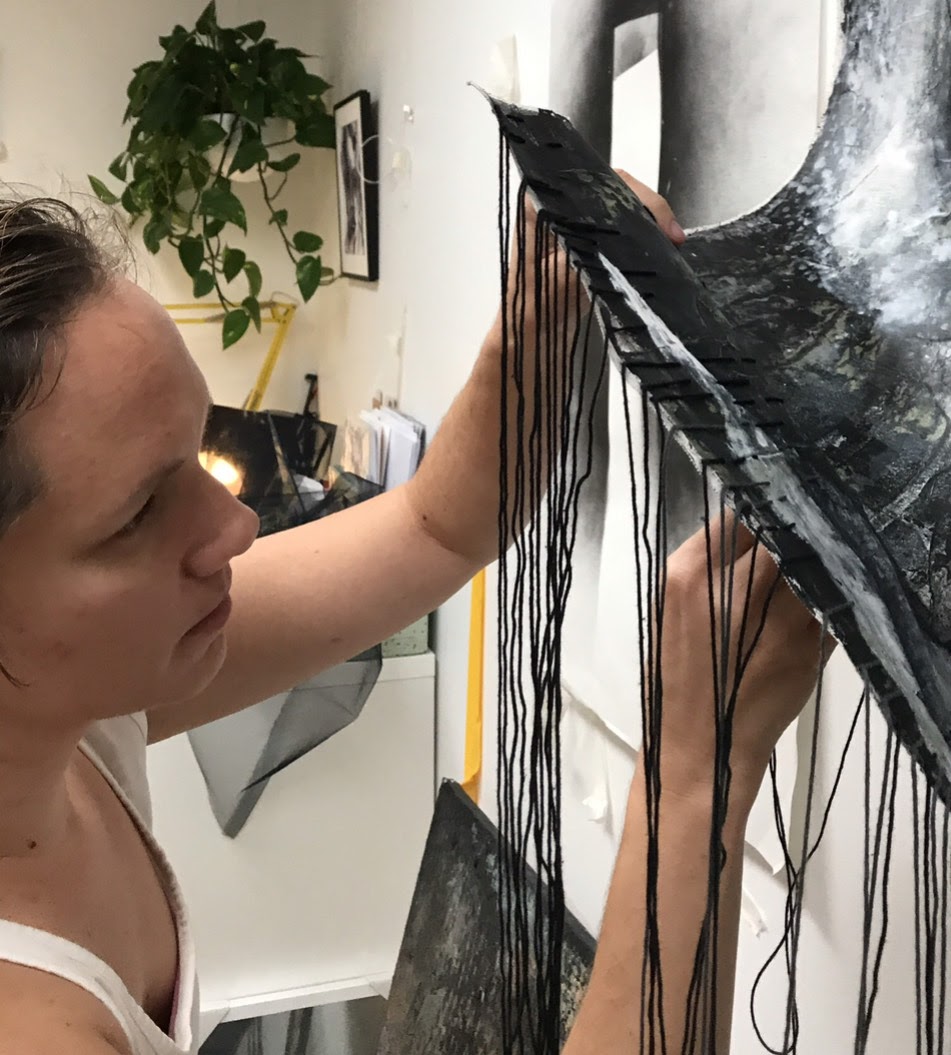
|
|





